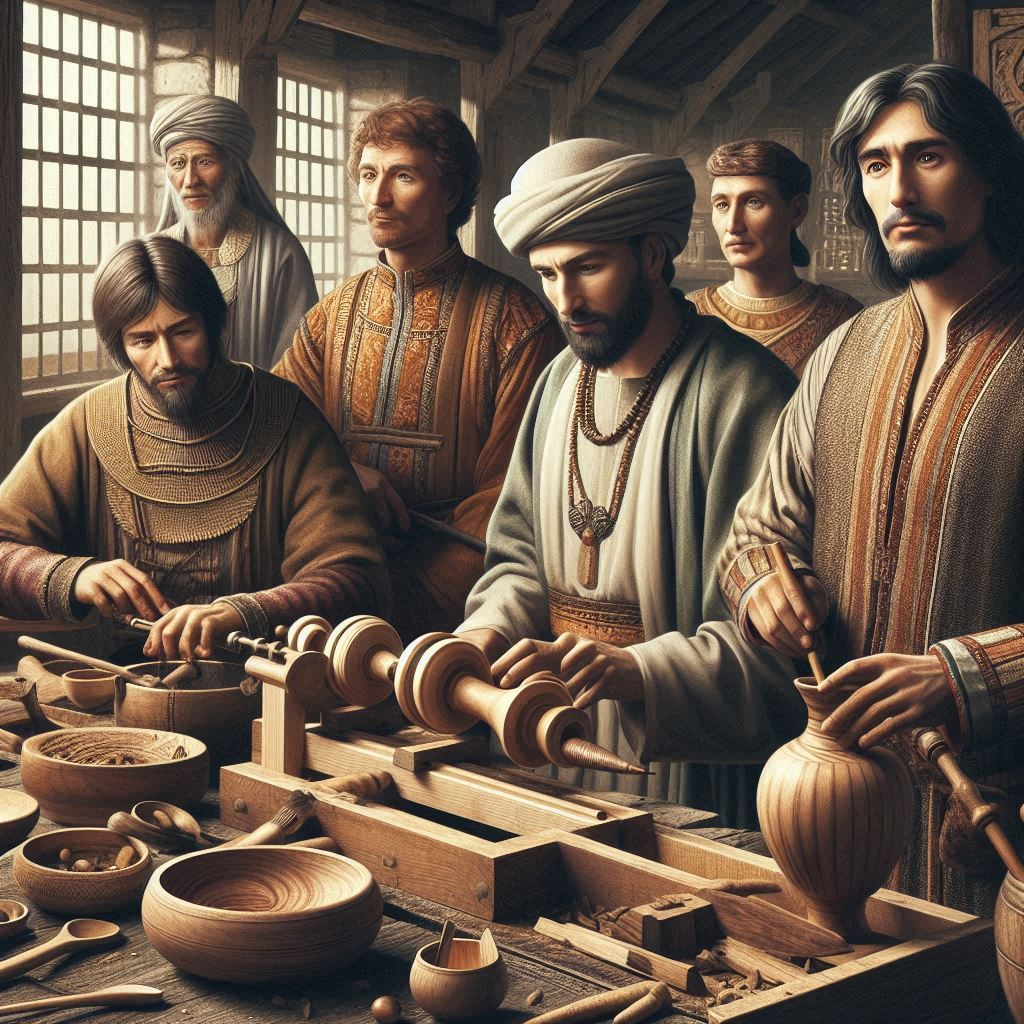
Surprising historical figures who were also skilled turners
Woodturning, a craft that has stood the test of time, holds a rich history intertwined with the lives of individuals who have left an indelible mark on the world. Beyond their well-known accomplishments and contributions, certain historical figures possessed a surprising talent for turning wood. This article delves into the intriguing intersection of craftsmanship and fame, shedding light on the lesser-known aspect of renowned personalities who excelled in the art of woodturning. By uncovering these hidden talents, we gain a deeper understanding of these figures and the impact of their turning skills on their legacies.
Woodturning has a rich history that dates back centuries, showcasing the artistry and craftsmanship of creating objects on a lathe. From functional tools to decorative pieces, the skill of turning wood has played a significant role in various cultures around the world.
The art of woodturning through the ages
Woodturning involves shaping wood while it spins on a lathe, allowing craftsmen to create intricate designs and functional items such as bowls, spindles, and furniture legs. This traditional craft dates back to ancient times and has evolved over the years, blending tradition with modern techniques.
Significance of turning skills in historical contexts
In historical contexts, turning skills were highly valued and often passed down through generations. Skilled turners were essential in creating everyday objects, tools, and ornamental pieces that served practical and aesthetic purposes in households, workshops, and royal courts.
The unexpected turning talents of renowned historical figures
While many famous historical figures are known for their leadership, artistic talents, or intellectual contributions, some also possess a surprising skill in woodturning. These revelations shed light on a lesser-known aspect of their personalities and highlight the universality of craftsmanship.
Surprising revelations about well-known figures
From artists to statesmen, uncovering the hidden talent for turning wood adds a new dimension to the public perception of historical figures. These unexpected skills offer a glimpse into their personal interests and reveal a side of their lives often overshadowed by their more prominent achievements.
Connecting craftsmanship to their broader achievements
Exploring how turning skills influenced the work and mindset of these historical figures provides insights into their creative processes and problem-solving abilities. By connecting their craftsmanship to their broader achievements, we can appreciate the multidimensional talents of these influential individuals.
Exploring the craftsmanship of famous leaders in turning
Leadership qualities can manifest in various forms, including the mastery of craftsmanship like woodturning. Examining how famous leaders honed their turning skills offers a unique perspective on their character traits and decision-making processes.
Leadership qualities reflected in their turning skills
The patience, precision, and attention to detail required in woodturning mirror the qualities of effective leadership, such as perseverance, vision, and adaptability. Understanding how these leaders applied their turning skills can provide new insights into their leadership styles.
How turning influenced their decision-making and creativity
Woodturning not only requires technical expertise but also sparks creativity and innovation. For famous leaders who were skilled turners, their experiences at the lathe likely influenced their approach to problem-solving, decision-making, and fostering creativity within their domains of influence.
Unveiling the hidden talents of influential historical figures
Beyond their well-documented accomplishments, influential historical figures often harboured talents and interests that remain lesser-known. Delving into their proficiency in woodturning sheds light on the personal lives and attributes that shaped their public image.
Recognizing lesser-known aspects of prominent figures
By uncovering the hidden talent for turning wood in influential historical figures, we gain a deeper understanding of their multifaceted personalities and passions. Recognizing these lesser-known aspects adds complexity to their legacies and humanizes their larger-than-life personas.
Impact of turning on their personal lives and public image
The practice of woodturning likely provided a creative outlet and source of fulfilment for these historical figures, impacting their personal well-being and influencing how others perceived them. Exploring the role of turning in their lives can reshape our appreciation for their contributions to history.
Impact of turning skills on the legacies of well-known personalities
It turns out that history is full of surprises, including the fact that some of the most well-known figures were also skilled turners. These individuals didn't just leave their mark on the world through politics or art; they also had a knack for crafting intricate and beautiful turned-wood pieces. Let's take a closer look at how their turning skills influenced their legacies in unexpected ways.
Legacy of turning expertise in shaping historical figures
From world leaders to renowned artists, the legacy of turning expertise has uniquely shaped the lives of historical figures. Many of these individuals found solace and creativity in the art of turning, allowing them to express themselves in ways that transcended their primary fields of influence. Whether it was a stress-relieving hobby or a profound passion, their turning skills added another dimension to their already impressive legacies.
Preserving and promoting their turning legacy for future generations
As we uncover the hidden talents of historical figures, it's essential to preserve and promote their turning legacy for future generations. By showcasing their craftsmanship and celebrating their multifaceted skills, we not only honour their memories but also inspire others to explore new hobbies and talents. Through exhibitions, workshops, and educational programs, we can ensure that the turning legacy of these remarkable individuals continues to captivate and inspire for years to come. As we reflect on the unexpected turning talents of these historical figures, we are reminded of the multifaceted nature of human potential and the hidden gems that lie within even the most well-known personalities. By exploring their craftsmanship and the profound impact of their turning skills, we not only honour their legacy but also celebrate the diversity of talent that shapes our shared history. Let these revelations inspire us to look beyond the surface and appreciate the depth of skill and creativity that exists within us all.
